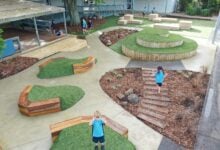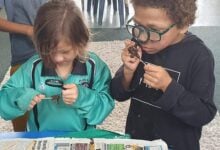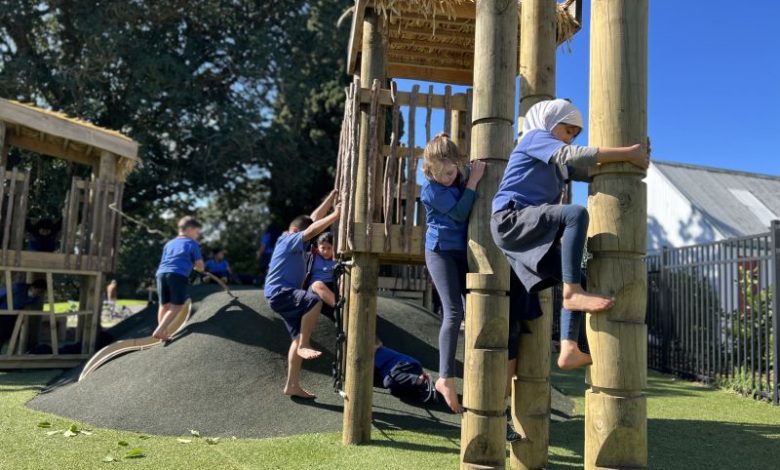
Ask your students what their favourite space in the school is. For many it won’t be the library or classroom. It’s the playground and outdoor areas that ākonga love most!
The importance of play
The State of Play Report, released by the Human Potential Centre at AUT University, said that the ‘new normal’ for many New Zealand children is to be sedentary, with more screentime, less movement and less time in the natural environment. The report also raised concerns that as our society becomes increasingly risk adverse, a generation of ‘bubble wrapped’ children is emerging, who have limited access to unstructured play. Children are given less opportunity to play creatively, engage with the environment around them, explore their physical capabilities, and learn to manage risks.
Read the latest print edition of School News HERE
Being active has a range of benefits for young people, as outlined by the Ministry of Health. Physical activity can help tamariki develop strong muscles, bones and joints, develop and maintain a healthy heart and lungs, move and balance with flexibility, and build confidence and social skills. The unstructured nature of playgrounds can also help students make new friends and interact with different people outside of their usual circle.
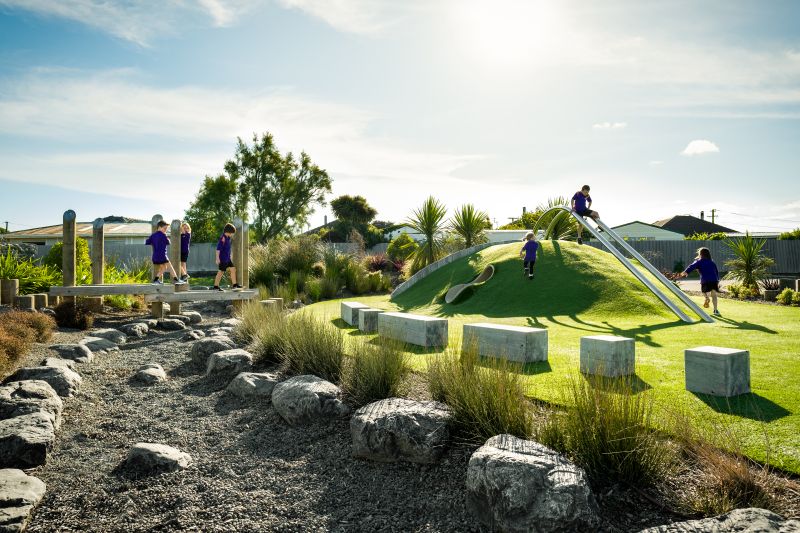
The MOH says children and young people should do at least one hour of moderate or vigorous physical activity spread over each day, at home, school and at play. Vigorous physical activity and activities that strengthen muscles and bones should be included at least three days each week.
Spending time outdoors can also improve mood and reduce feelings of stress and anger. Exposure to sunlight in the morning can promote better sleep, as it helps our body clocks to regulate. This in turn can help students focus, and concentrate better throughout the school day.
Safety First
Before purchasing new equipment or safety surfacing for outdoor areas, schools must ensure the product has been tested against specifications of NZS5828:2015, and that the manufacturer can supply a certificate of compliance for equipment. A certificate of compliance should show that equipment or safety surfacing has been installed according to manufacturer’s instructions.
All outdoor areas should provide adequate sun protection, to shield against Aotearoa New Zealand’s harsh sun. Shade structures can also make spaces useable when it is raining, and will help protect equipment from the weather, increasing its lifespan.
Play areas should be assessed for any potential risks, such as falling from equipment. Sharp edges should be fitted with padding, and any damage to play structures should be promptly repaired. A cushion fall safety surface is an important consideration for mitigating injuries if children should trip or fall over while playing.
The right equipment
When planning your playground, an obvious starting point may be to think about the size of the playground, and available space for equipment. The number of children expected to use the playground at any one time, and the age range of children should also be considered. Ensuring the space can be used by all students is important, so make sure the area can be accessed by people with different mobility needs, and that appropriate equipment is available for students with special needs and disabilities.
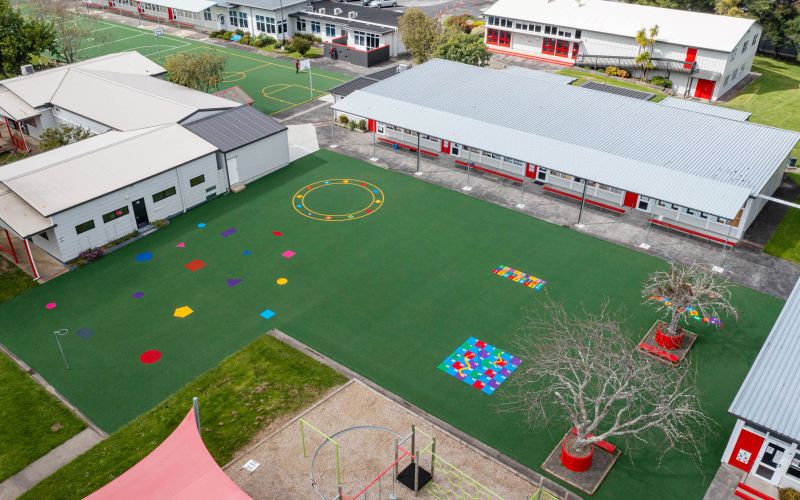
Choosing specifically designed age-appropriate equipment will ensure children develop their physical and cognitive abilities, and improve their sensory responses. This is also important to ensure students using a playground are presented with manageable challenges, and can use equipment safely.
What the experts say
Tim Scott, Landscape Architect at Kamo Marsh said longevity of playgrounds is crucial. “Playgrounds are some of the most heavily used areas within a school, distinct in their consistent use by the same groups of children over an extended period. Day in and day out, these spaces withstand the demanding use by children of different ages, subjecting the equipment to constant and sometimes unconventional use.
“The success of a school playground design hinges on its ability to adapt to the dynamic needs of children. Safety requirements, accounting for the high volume of use and catering to a diverse range of abilities and heights of the children are practical aspects to be considered. The design should also accommodate the high level of ongoing use by the same children, necessitating flexibility for a variety of activities and games within these play spaces. Non-prescriptive play opportunities create opportunities for children to invent their own games and encourages creativity,” Mr Scott said.
“At their best, school playgrounds extend beyond mere recreation, functioning as an extension of the classroom. Integrated into the wider outdoor environment, well designed play spaces become an opportunity to promote and support learning that aligns with the school’s curriculum and expresses the school’s culture and character within its broader environment.”
Larissa Rose from Park Supplies and Playgrounds said schools should consider if they are after a playground or playspace. “Playgrounds have traditional equipment, often bark surfacing, catering to physical challenges and large numbers of children. A playspace might have some traditional equipment, with other features like outdoor learning and social spaces.
“If a playground is what a school needs, then the main consideration is play value, creating a space that is inclusive and caters to the right age range with age-appropriate challenges. Seeking a designer that will also consider a good flow, a range of play types, extending children’s engagement and reducing future maintenance is important,” Ms Rose said. “A good design will always consider inclusivity in equipment, surfacing and the facilities provided in and around the playspace.”
Ms Rose said natural looking playspaces and playgrounds are popular, as is encouraging unprescribed, imaginary play. “Unprescribed play is where an item of equipment can be used in multiple ways and doesn’t tell the user exactly how it needs to be used. This is featured in creating playspaces for schools that supplement their existing playgrounds and offer a wider range of play options.”
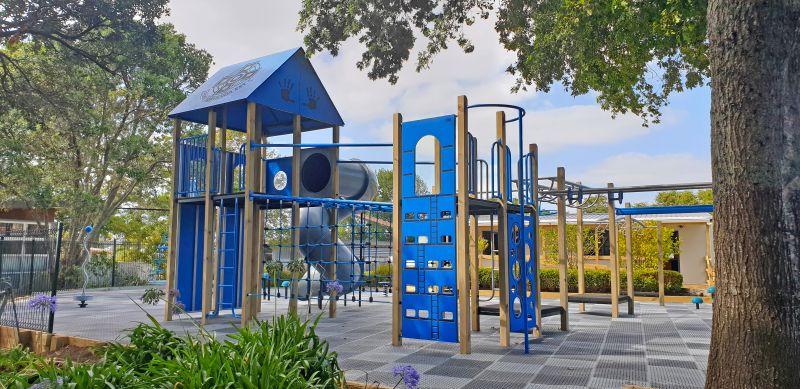
Lara Campbell from Teamturf highlighted several factors schools should consider when installing a playground safety surface. “The material used should be impact-absorbent, reducing the risk of injuries from falls. It should also be highly durable, as it will be subjected to constant use, and provide adequate traction to prevent slips and falls, especially during wet weather. Schools should also consider the ease of maintenance and cleaning.
“Most importantly, the surface should comply with NZS5828:2015 safety standards to guarantee the surface meets certification and provides the highest level of protection for children.”
Ms Campbell said artificial turf surfacing is durable and low maintenance, with the ability to customise this surface with different colours and patterns. “By incorporating different colours and patterns, children are encouraged to explore and interact with their surroundings, fostering imaginative play and social interaction. This allows playgrounds to be tailored to specific themes or educational concepts, seamlessly integrating learning and play.
“Artificial turf can be customised with various shades of green to mimic natural grass, or with bold and vibrant colours to create a playful and stimulating environment. Patterns, logos and games can be incorporated into the turf, adding a unique touch to the space.”
Lara Croll from Playscape said it is important for a school to consider how play extends out of the traditional square box. “We’re seeing a big shift in schools to creating cohesive outdoor play and learning environments that incorporate play elements typically seen in early childcare. Spaces for messy open-ended play, and a large focus on sensory engagement through tactile play are emerging trends. Alongside this, there has been a focus in incorporating more nature spaces and break out zones to create calm spaces for our tamariki to self-regulate,” Ms Croll said.
“When designing an outdoor space, it’s important to think about longevity and maintenance.”
For older playgrounds, Ms Croll said while renovating and upgrading these may seem environmentally friendly, it is not always the most cost-effective, or safest option. “We are all for minimising waste and love the opportunity to work together to think how else elements of these structures could be used or repurposed.”
Michael Klaja from Reharvest said safety is always paramount at schools, particularly around playgrounds. “Make sure the product you choose as a floor covering meets safety standards, and has been through rigorous testing.
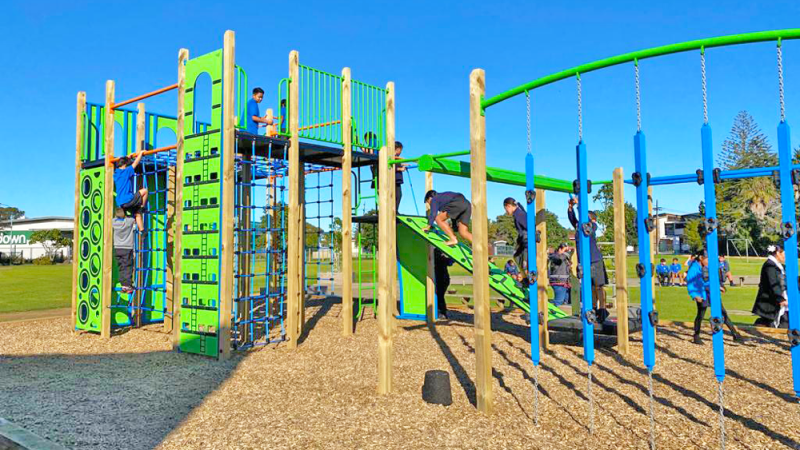
“Even with safety measures in place and appropriate supervision, children may sometimes fall off equipment. This means it is important to have a floor that will cushion falls. A safety surface that has been impact tested to at least three metres will ensure minimal impact to the child,” Mr Klaja said.
“Everyone must be able to use outdoor spaces, including students or teachers with different mobility needs. Look for a mulch that interlocks so the area can be safely accessed by wheelchairs.
“Using a mulch made from recycled product is a sustainable solution, and will reduce your school’s environmental impact.”








